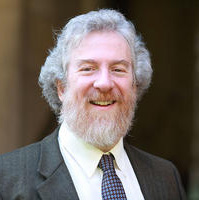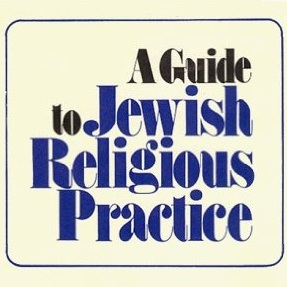Search Results
Back to JTS Torah Online's Main page
To Know or Not to Know
Aug 11, 2023 By Malka Strasberg Edinger | Commentary | Re'eh | Tishah Be'av
The centralization of cultic worship is one of the major themes in the book of Deuteronomy. However, the place of that worship, the Temple, is described as “the place that God will choose,” with no mention of where that place is to exist. This week’s parashah, parashat Re’eh, introduces the theme that once in the Land of Israel, the Israelites are to worship their God in “hamakom asher yivhar Hashem” (the place that God will choose). This vague phraseology, which only alludes to a specific place but does not specify where that place is, is repeated 21 times throughout the book of Deuteronomy, with 16 of those occurrences in our parashah alone.
Read More
Rebuilding the Temple Within
Jul 16, 2021 By Eitan Fishbane | Commentary | Devarim | Tishah Be'av
With this parashah, we begin the book of Deuteronomy, the opening of a book of memory—a recalling of the forty years of desert wandering while simultaneously anticipating the entrance of the people into the Land of Israel.
Read More
The Wholeness of a Broken Tablet
Jul 31, 2020 By Naomi Kalish | Commentary | Va'et-hannan | Tishah Be'av
Parashat Va’et-hannan (Deut. 3–7) is always read on Shabbat Nahamu—the “Shabbat of Comfort”—which falls immediately after Tishah Be’av, the day when we commemorate the destruction of the First and Second Temples. It receives its name from the opening line of the Haftarah: “Comfort, comfort, my people” (Isaiah 40:1).
Read More
Hope Amid Destruction
Aug 9, 2019 By Sara J. Bloomfield | Commentary | Devarim | Tishah Be'av
Tishah Be’av, which begins immediately after this Shabbat, is a moment on the Jewish calendar when we pause to reflect on the nature, impact, and significance of destruction. I’ve spent 33 years working at the United States Holocaust Memorial Museum, so naturally I’ve thought intensely about what the catastrophic destruction of European Jewry means for me, for Jews, and for humanity.
Read More
Cantillation for Lamentations
Oct 23, 2018 By The Jewish Theological Seminary | Prayer Recordings | Tishah Be'av
Recordings by Cantor Sarah Levine (CS ’17).
Read More
Third Haftarah of Rebuke (Shabbat Hazon)
Jul 20, 2018 By Jan Uhrbach | Commentary | Devarim | Tishah Be'av
In this third haftarah of calamity or rebuke, the opening chapter of Isaiah, the once noble society has sunk to the level of Sodom and Gomorrah. Strikingly, there is no dearth of external piety (indeed, God is over-satiated to the point of disgust with the people’s offerings and prayers), nor is there any charge of sexual impropriety or impurity. Rather, the suffering of the people is caused by injustice, indifference to the cries of the vulnerable, oppression, systemic greed, and selfish and self-serving leadership.
Read More
Unleashing the Haftarah
Jul 13, 2018 By Jan Uhrbach | Commentary | Tishah Be'av
One of the most remarkable aspects of the Tanakh is its self-critical character. Like the narratives of the Torah, the “former” prophets (Joshua, Judges, Samuel, Kings) feature only flawed heroes. The “latter” prophets (Isaiah, Jeremiah, Ezekiel, the twelve minor prophets) raise the stakes. Soaring and searing, they rail against the injustices and failures of society, holding a mirror to structural inequities that create poverty and oppression. The prophets lay bare the systemic corruptions within even biblically-created institutions—the priesthood, monarchy, and nation—revealing hypocrisies, false pieties, and breaches of the public trust.
Read More
First and second haftarot of rebuke
Jul 6, 2018 By Jan Uhrbach | Commentary | Masei | Mattot | Pinehas | Tishah Be'av
Chapters 1 and 2 of Jeremiah constitute the first two haftarot of “calamity” or rebuke. In them, the prophet anticipates disorienting but necessary societal upheaval; he is called “to uproot and pull down, destroy and overthrow,” and also “to build and to plant.”
Read More
An Oasis of Freedom and Justice
Jul 28, 2017 By Daniel Nevins | Commentary | Tishah Be'av
“I have a dream that one day even the state of Mississippi, a state sweltering with the heat of injustice, sweltering with the heat of oppression, will be transformed into an oasis of freedom and justice.”
Read More
Jerusalem
Jul 17, 2013 By Samuel Barth | Commentary | Tishah Be'av
As we emerge from our encounter with destruction and desolation on Tish’ah Be’Av, we approach Shabbat Nahamu, named for the opening words of the haftarah “Nahamu nahamu ami” (Be comforted, oh be comforted My people; Isa. 40:1). This becomes the week when we allow ourselves to encounter all the images of Jerusalem that are presented to us as signs and symbols of hope in our liturgy.
Read More
The Laws of Tisha Be’Av
Jul 15, 2013 By Isaac Klein | Tishah Be'av
From: A Guide to Jewish Religious Practice
Read More
A Just and Sustainable Society
Jul 13, 2013 By Daniel Nevins | Commentary | Devarim | Tishah Be'av
What is your vision of a righteous city? This is an important question, because this week is known as Shabbat Hazon, the Sabbath of Vision, and the vision offered by our prophets is that of a city that has gone astray, abandoning the path of righteousness.
Read More
Tisha Be’av
Jul 8, 2013 By Samuel Barth | Commentary | Tishah Be'av
These words will reach you during the nine days that lead to the fast on Tish’ah Be’Av, the day we mourn the destruction of the first and second Temples and many other tragedies of Jewish history. It is traditionally a complete fast—from sunset until sunset—with Yom Kippur the only other such fast day in the Jewish calendar. There is a Hasidic teaching that no halakhah concerning fasting on these days is needed, for “on the black fast of Tish’ah Be’Av, who could eat, and on the white fast of Yom Kippur, who needs to eat?”
Read More
Remembering the Munich Eleven
Aug 4, 2012 By Marc Wolf | Commentary | Tishah Be'av
What we encounter in the text of the Talmud is the tension between communal mourning and communal celebration. We live our lives in that tension—between joy and sadness, life and death, destruction and rebuilding. All too often our moments of joy are interrupted abruptly by tragedy, and dancing turns to dirge. Just as quickly, we are taken by the hand and out of the depths of our sadness, pulled both emotionally and physically into communal celebration.
Read More
The Source of Hope
Jul 21, 2012 By Mychal Springer | Commentary | Masei | Mattot | Tishah Be'av
In a dramatic reversal of the ordinary mourning process, which begins in its starkest intensity and lifts over time as the mourners are comforted, these are weeks of increasing mourning that move, inevitably, to the destruction of God’s house and the banishment of the People into exile. The prophetic readings drive home that we have brought this horrible tragedy on ourselves.
Read More
Choosing Love and Life
Jul 14, 2012 By Andrew Shugerman | Commentary | Pinehas | Tishah Be'av
Every summer I find striking the juxtaposition of Parashat Pinhas with its place in our calendar. This portion either soon follows (as it does this year) or immediately precedes 17 Tammuz. We always read the complete description of the biblical holidays’ offerings with the calamities listed above also in mind. This litany of misfortunes does not only include those related to the end of Temple-based worship; it also locates within the Torah the origin of each of these infamous dates observed as fast days. Those interpretations teach a deeper lesson about Jewish unity when considered with this week’s Torah portion and current events.
Read More
Confronting Our Own Shortcomings
Aug 9, 2011 By Andrew Shugerman | Commentary | Text Study | Tishah Be'av
It may sound strange that I look forward every summer to observing Tish’ah Be’Av. The saddest day on the Hebrew calendar is also the one I have found most consistently meaningful since my teenage years.
Read More
How We Reconcile Grief and Comfort
Jul 17, 2010 By Marc Wolf | Commentary | Tishah Be'av
The Hebrew month of Av, as the Rabbis have acknowledged and history has reinforced, is the month of calamity—the month of sorrow. There is quite a list of catastrophes that transpired on the day we observe in fasting and mourning this week: from the report of the spies under Moses to the destruction of both the First and Second Temples; from the expulsion of the Jews from Spain, under the edict of Franz Ferdinand, to the deportation of Jews from the Warsaw Ghetto to Treblinka in 1942. Each shares this day on the calendar, and as we approach the ninth of Av, we prepare ourselves for some destruction—be it spiritual or historic—that resonates with each of us.
Read More
Our Hope and Despair
Jul 18, 2009 By Mychal Springer | Commentary | Masei | Mattot | Tishah Be'av
We are now in the period known as the Three Weeks: the weeks between the fast of the seventeenth of Tammuz, which marks the day the outer walls of Jerusalem were breached by the Babylonians, and the ninth of Av, when the Babylonians destroyed the Temple. These weeks are the low point of the year. In a dramatic reversal of the ordinary mourning process, which begins in its starkest intensity and lifts over time as the mourners are comforted, these weeks of mourning increase in intensity as they move, inevitably, to the destruction of God’s house and the banishment of the people into exile. The prophetic readings drive home that we have brought this horrible tragedy on ourselves. This week’s haftarah, from chapter 2 of Jeremiah, is the second of three haftarot of affliction. Jeremiah chastises the people for having strayed from God and God’s Torah.
Read More
Singing of Freedom
Oct 9, 2008 By David M. Ackerman | Commentary | Tishah Be'av | Yom Kippur
Maya Angelou’s celebrated poem, “Caged Bird” (Shaker, Why Don’t You Sing. Random House, 1983) has long inspired me, especially at this time of the year. Grippingly, the poem contrasts “a free bird [who] dares to claim the sky” with “a bird that stalks down his narrow cage,” a creature of limited vision and range. Although the “caged bird stands on the grave of dreams,” he still has longing in his heart.
Read MoreSUBSCRIBE TO TORAH FROM JTS
Our regular commentaries and videos are a great way to stay intellectually and spiritually engaged with Jewish thought and wisdom.




